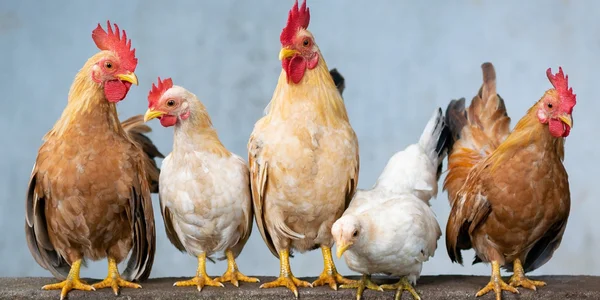Chickens are among the most common domesticated animals in the world, but don’t let their everyday presence fool you — these feathery creatures are full of surprises! From their complex social behavior to their prehistoric ancestry, chickens are much more fascinating than they’re often given credit for.
So, whether you’re a backyard chicken keeper, a trivia lover, or just curious about animals, here are 10 fun and surprising facts about chickens that’ll make you see them in a whole new light.
1. Chickens Are the Closest Living Relatives to the Tyrannosaurus Rex

Yes, you read that right! Genetic and molecular studies have revealed that chickens share a close evolutionary relationship with the mighty Tyrannosaurus rex. A 2020 study published in Science Advances confirmed similarities in collagen proteins found in both species, indicating a shared ancestry.
From T. rex to tiny roost — evolution works in mysterious (and fascinating) ways!
2. Chickens Can Remember Over 100 Different Faces
Chickens have excellent memories and are surprisingly social. According to research from the University of Bristol, chickens can recognize and remember the faces of over 100 other chickens and even humans. They use this ability to establish and maintain complex social hierarchies.
Chickens aren’t bird-brained — they’re feathered geniuses in their own right!
3. Chickens Communicate With Over 30 Unique Sounds
Clucks, purrs, squawks, and more — chickens have a vocabulary of over 30 distinct vocalizations. Each sound carries a different meaning, such as warnings of predators, calling their chicks, or signaling where to find food.
A rooster’s crow isn’t just noise — it’s communication!
4. A Chicken Can Dream, Just Like You
Just like humans, chickens experience REM (Rapid Eye Movement) sleep, which is linked to dreaming. Scientists have observed brain wave activity during chicken sleep that mirrors human dreaming patterns.
So next time you see a chicken sleeping, they might just be dreaming of corn and sunshine.
5. Hens “Talk” to Their Chicks Before They Hatch
Mother hens begin communicating with their chicks while they’re still in the egg. Hens cluck softly to their eggs, and chicks respond with faint peeps as early as the 18th day of incubation.
This prenatal bonding helps chicks recognize their mother’s voice once they hatch.
6. Chickens Are Omnivores — Not Just Grain Eaters
Contrary to popular belief, chickens aren’t vegetarians. In the wild, they’ll eat insects, worms, lizards, and even small rodents. They love scratching around for protein-rich treats, which are essential to their diet.
️ Give a chicken a bug, and you’ll see pure joy!
7. A Chicken’s Egg Color Is Determined by Its Earlobe
Believe it or not, a chicken’s earlobe color often indicates the color of the eggs it will lay. Chickens with white earlobes typically lay white eggs, while those with red or brown earlobes usually lay brown eggs.
Bonus fact: All eggs start out white — pigments are added in the final hours of shell formation!
8. Chickens Can Live Over a Decade
While commercial farm chickens often have shorter lifespans, backyard chickens can live 10–12 years with proper care. The oldest recorded chicken, a hen named Matilda from Alabama, lived to be 16 years old!
That’s over 5,800 days of pecking, preening, and laying.
9. Chickens Are Natural Pest Controllers
Backyard chickens don’t just provide eggs — they’re also eco-friendly pest managers. They love eating ticks, mosquitoes, grubs, and even small snakes. Some organic farms use chickens as part of natural pest control strategies.
No pesticides needed — just a few hungry hens!
10. There Are More Chickens Than People on Earth
As of 2024, the estimated global chicken population is over 34 billion, according to the Food and Agriculture Organization (FAO). That’s more than four times the current human population!
Chickens truly rule the roost on a global scale.
Final Thoughts: Chickens Deserve More Credit
From their social smarts to their evolutionary backstory, chickens are anything but ordinary. They are intelligent, caring, and even have a bit of dinosaur flair in their genes. Whether you’re raising them in your backyard or just cracking an egg for breakfast, it’s worth remembering how fascinating these birds truly are.
Next time you see a chicken, give it a second look — you might just be staring into the eyes of a tiny T. rex descendant with a dream!



